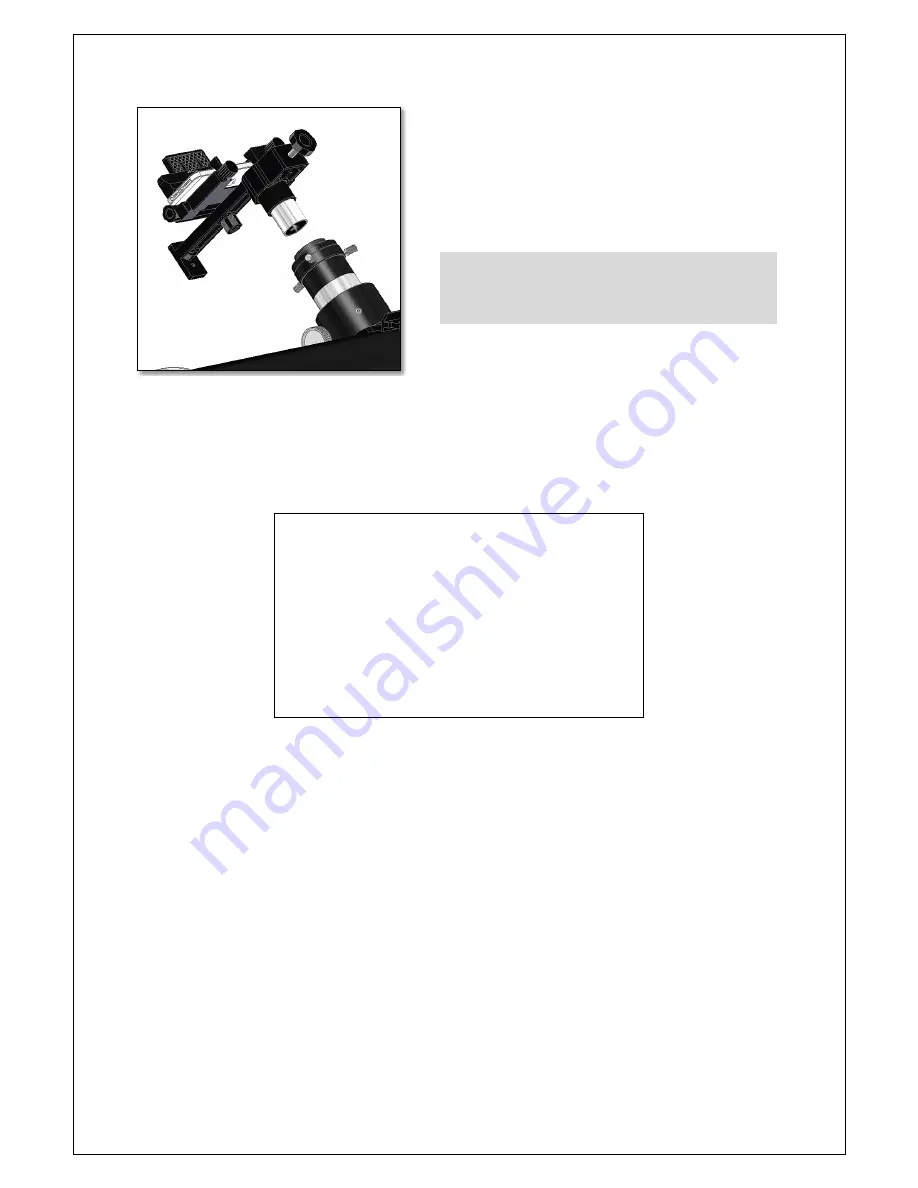
Reproduction of part or all of the contents of this document in any form is expressly prohibited other than for individual use only. All text, images and labels are property of nimax Gmbh.
Art.- Nr. 49754
3.3. Which astronomical objects can be photographed?
3.3.1. Deep-Sky objects. These objects are so dim that afocal photography is
very difficult. Most smartphone cameras are not designed to capture night
pictures, so they are also not good for faint deep sky objects. The captured
images have too much electronic noise to be used. There are some apps
that allow to add multiple images to increase the signal/noise ratio, giving a
“pseudo” long-exposure result. Some smartphones are more sensitive than
others. Give it a try!
3.3.2. The Sun. Is by far one of the most exciting objects to photograph. It
has unique features on its surface that can be easily photographed. Make
sure to always use a suitable solar filter when taking pictures of the Sun.
Select “Solar Rate” when using a motorized mount to track the Sun. This
way the telescope will follow the Sun’s apparent movement on the day-sky.
3.3.3. Planets and the Moon. Mercury, Venus, Mars, Jupiter, Saturn and of
course the Moon are targets that are easily photographed by using the
afocal photography method. The Moon can be a very bright object - we
recommend the use of a Moon filter for telescopes with more than 6” in aperture. Using colour filters for planet photography is also
recommended, these allow to emphasize surface details. Just thread them to the eyepiece threaded barrel as you would do with a Moon
filter. A barlow lens is also recommended. It allows to magnify the planet’s disc and photograph it in more detail. Use a planetarium
software to check the current planet position on the night sky making it easier to locate it on photograph.
4. Product Specifications.
Never photograph the sun without an adequate dedicated sun
filter. A front aperture telescope filter must always be used. Even
looking briefly through the telescope’s eyepiece may cause
permanent eye damage or even blindness.
Smartphone Bracket
Size:
88mmx60mmx120mm
Weight:
150g
Maximum smartphone width: 80mm
Threaded holes:
¼”-20
Material:
ABS Plastic and Brass
Adapter body
Size:
105x115x195mm
Weight:
350g
Eyepiece diameter:
from 28mm to 45mm
Platform maximum load:
1.5kg
Material:
Injected Aluminium, ABS Plastic and steel
Figure 12. Slide the eyepiece to the focuser as you would do for
visual use. Make sure to tighten all eyepiece thumbscrews.




